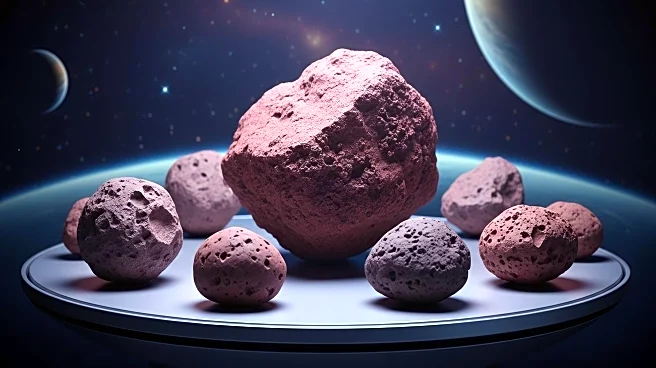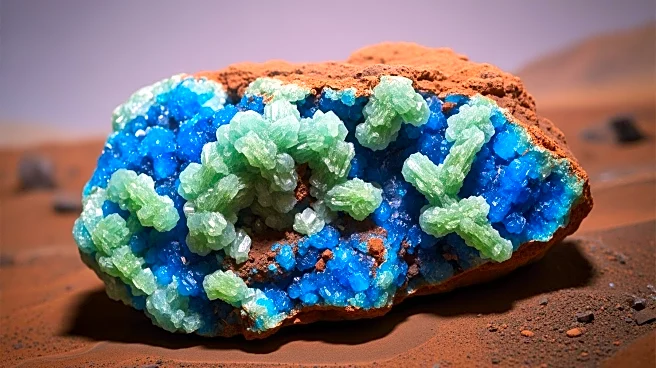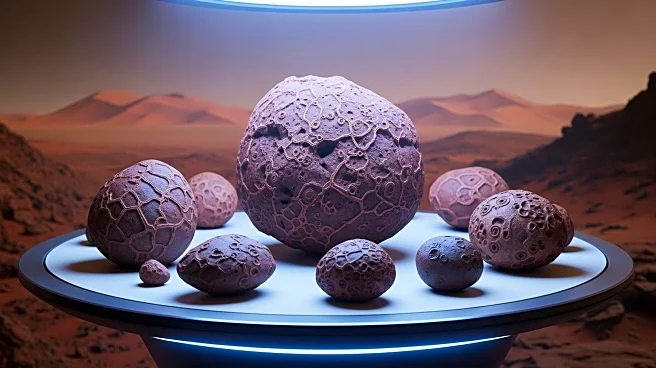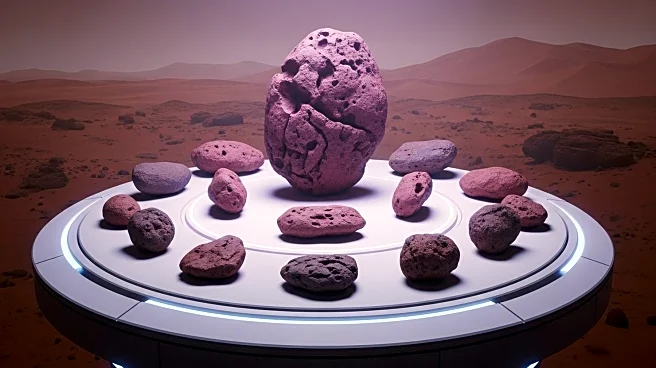What's Happening?
NASA's Perseverance rover has discovered potential biosignatures in sedimentary rocks at the Jezero Crater, suggesting Mars may have been habitable longer than previously thought. The rocks contain vivianite and greigite minerals, which could indicate microbial activity. The discovery challenges earlier assumptions that signs of life would be confined to older rock formations. The findings, published in a peer-reviewed paper, highlight the need for rigorous scientific validation before making claims about extraterrestrial life.
Why It's Important?
The discovery of potential biosignatures in younger sedimentary rocks suggests Mars could have supported life later in its history. This finding expands the timeline for Mars' habitability and raises the possibility of life existing beyond Earth. The presence of minerals associated with microbial activity could provide insights into the planet's environmental conditions and the potential for life.
What's Next?
NASA will continue to analyze the rock samples collected by Perseverance to determine the origin of the minerals. The scientific community will use established frameworks to assess the significance of potential signals of life. The rover's data will aid in future research and exploration efforts, contributing to NASA's Mars Exploration Program.











